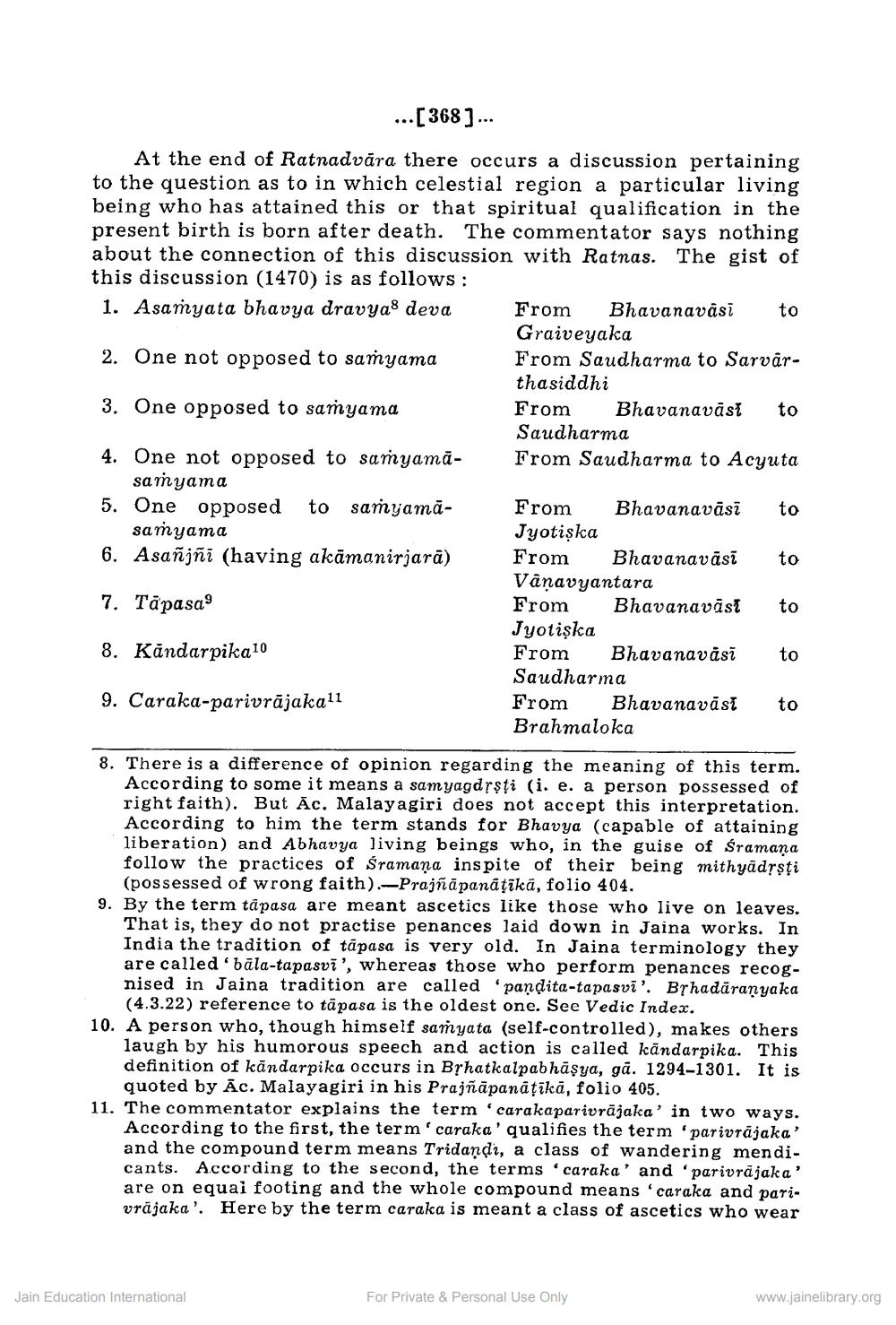________________
...[368]...
At the end of Ratnadvära there occurs a discussion pertaining to the question as to in which celestial region a particular living being who has attained this or that spiritual qualification in the present birth is born after death. The commentator says nothing about the connection of this discussion with Ratnas. The gist of this discussion (1470) is as follows: 1. Asamyata bhavya dravya deva
2. One not opposed to samyama
3. One opposed to samyama
4. One not opposed to samyamasamyama
5. One opposed to samyamā
From Bhavanavāsī Jyotiska
From Bhavanavāsī to Vāṇavyantara
From Bhavanavast to Jyotişka
From Bhavanavāsī to Saudharma
From Bhavanavāsī to Brahmaloka
8. There is a difference of opinion regarding the meaning of this term. According to some it means a samyagdṛṣṭi (i. e. a person possessed of right faith). But Ac. Malayagiri does not accept this interpretation. According to him the term stands for Bhavya (capable of attaining liberation) and Abhavya living beings who, in the guise of Śramana follow the practices of Sramana inspite of their being mithyadṛṣṭi (possessed of wrong faith).-Prajñāpanāṭikā, folio 404.
samyama
6. Asañjñi (having akāmanirjarā)
7. Tāpasa9
8. Kandarpika10
9. Caraka-parivrājaka11
From Bhavanavasi to Graiveyaka
From Saudharma to Sarvärthasiddhi
From Bhavanavast to Saudharma
From Saudharma to Acyuta
9. By the term tapasa are meant ascetics like those who live on leaves. That is, they do not practise penances laid down in Jaina works. In India the tradition of tapasa is very old. In Jaina terminology they are called 'bala-tapasvi', whereas those who perform penances recognised in Jaina tradition are called 'pandita-tapasvi'. Brhadaranyaka (4.3.22) reference to tāpasa is the oldest one. See Vedic Index.
to
10. A person who, though himself samyata (self-controlled), makes others laugh by his humorous speech and action is called kandarpika. This definition of kandarpika occurs in Bṛhatkalpabhāṣya, ga. 1294-1301. It is quoted by Ac. Malayagiri in his Prajñāpanāṭikā, folio 405.
Jain Education International
11. The commentator explains the term 'carakaparivrājaka' in two ways. According to the first, the term 'caraka' qualifies the term 'parivrājaka' and the compound term means Tridandi, a class of wandering mendicants. According to the second, the terms 'caraka' and 'parivrajaka' are on equai footing and the whole compound means 'caraka and parivrajaka'. Here by the term caraka is meant a class of ascetics who wear
For Private & Personal Use Only
www.jainelibrary.org




